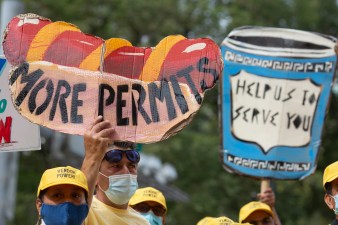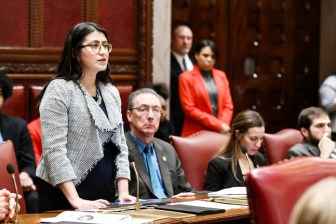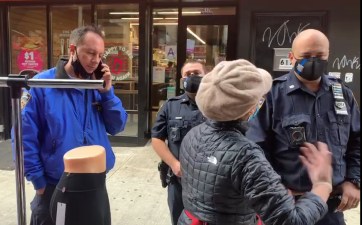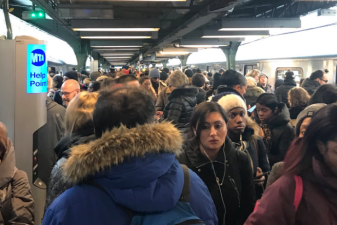A Bridge Too Far: City Seeks Authority to Ban Sellers From Spans
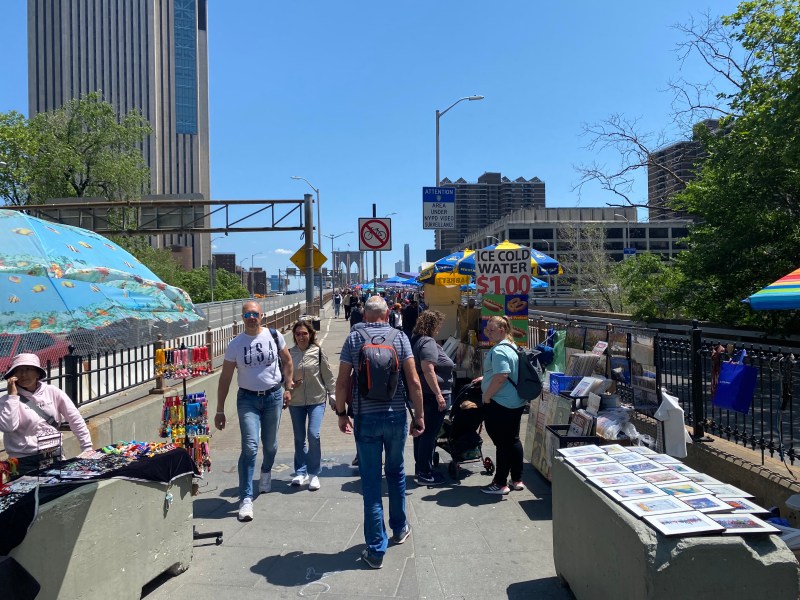
The Department of Transportation wants to ban street vendors from its bridges after NYPD temporarily ejected sellers from the Brooklyn Bridge promenade in January — raising the alarm for merchants who say they have fewer and fewer places to hawk their wares.
“Where will I go to work?” decried Robert Velsor, who was a vendor on Main Street in Flushing before the NYPD cracked down on illegal vending there recently, and has since relocated to selling souvenirs at the tourist-heavy East River crossing.
“I served in Vietnam, I’m disabled, this is how I make my living. They’re taking the food out of the veterans’ mouth.”
DOT’s proposal aims to “clarify” existing regulations to explicitly say “that vending is prohibited on the elevated pedestrian walkways and their approaches of bridges,” according to a notice published in the City Record on Wednesday. The tweaks would make it easier for cops to crack down on sellers, the notice said.
“While existing rules imply that vending is effectively prohibited on bridges, an explicit restriction would clarify the city’s complex vending rules and aid in enforcement efforts,” the notice states.
DOT plans to finalize the rule change between July and the end of September, according to the notice.
The agency operates 789 bridges across the five boroughs, but vendors primarily gather on the bustling Brooklyn Bridge promenade and approach, where they sell Big Apple-themed merchandise, hot dogs, and $1 water to the throngs of tourists.
In January, cops briefly booted the sellers off the 140-year-old bridge’s footpath — following direct orders from Mayor Adams, Streetsblog previously reported. Vendors were told to leave even if they had legal licenses and permits.
Sellers on Wednesday — some of whom have been on the bridge for years — expressed outrage that the city might once again force them to pack up and disperse, this time permanently.
“This is a Democrat mayor, we voted for him. They want to remove us from our jobs.” said Gyatso Lama, a vendor on the bridge for 21 years. “If you guys move this one, where we will go?”

Street vendors are required to have licenses and permits, depending on whether they sell food or other goods, but the city has capped the number of permits for decades. Officials have been slow to roll out more, despite a two-year-old law requiring them to expand the right to more people.
Several city rules govern where vendors can set up shop. Sellers’s tables can’t occupy more than eight-by-three feet of space on a sidewalk, and must not block bus shelters, building entrances, or crosswalks.
The Brooklyn Bridge promenade is an uninterrupted public space with a lot of foot traffic — making it an ideal spot to sell goods, according to one vendor advocate who slammed the city’s proposed blanket ban.
Vendors have set up in larger numbers on the path in recent years — especially after former Mayor Bill de Blasio freed up space by moving cyclists, who used to share the tight boardwalk, to dedicated lanes in the roadway below in 2021.
“Seeing the city banning vending in more locations and doing more work and more policy to make vending more difficult than it is already is really disappointing,” said Mohamed Attia, a former vendor who now leads the group the Street Vendor Project, an organization within the Urban Justice Center.
“On the other hand, we don’t see any support coming to the vendors, no more opportunities being created.”

The number of permits to sell food on the street has been capped at 5,100 for decades, but there could be as many as 20,000 sellers citywide, Attia’s group estimates. Vendors routinely resort to renting the documents under the table at $10,000 a year.
The city’s waiting list for new permits is 10,000 names long, and the Adams administration is behind on its mandate to add 4,000 more licenses by 2032. Ticketing against the vendors skyrocketed last year, however — with NYPD issuing summonses at nearly double the rate compared to pre-pandemic.
Mayor Adams has vested responsibility for enforcement with the Department of Sanitation, which has 76 police officers and nearly $3 million in the upcoming budget to hire another 40 more for vendor enforcement, officials told the City Council at a hearing last week.
DOT spokesman Scott Gastel said vending is already restricted on the walkway, “even before this proposed rule.”

